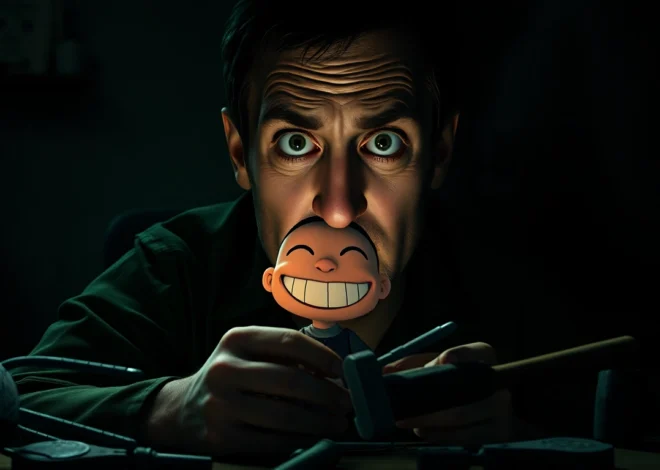
BloodMoney: The Psychological Horror of Moral Decay in a Dark Clicker Game
Overview and Context: BloodMoney — A Dark Clicker Descent into Morality
In the realm of psychological horror and indie gaming, few titles evoke the visceral discomfort and moral introspection as bloodmoney harvey. This dark clicker game thrusts players into a disturbing journey where each click not only generates cash but also slowly erodes their moral boundaries. It’s a game that masterfully blends minimalist gameplay mechanics with a profoundly unsettling narrative, challenging players to confront the very nature of human ethics when survival is at stake. As you navigate the grim landscape of BloodMoney, you’ll find yourself questioning the cost of profit and the limits of compassion, making it an unforgettable psychological experience.
The Game Mechanics and Core Concepts
Clicking Mechanics and Profit Generation
At its core, BloodMoney is a simple yet deeply impactful clicker game. The player’s primary task is to click on Harvey, a cheerful character who offers an unconventional solution to a dire problem: raising $25,000 for urgent medical bills. Each click on Harvey instantly generates a sum of money, but this comes at a severe moral and emotional cost. Harvey, depicted as a seemingly innocent and helpful figure, endures increasing pain with every click. This duality is the foundation of the game’s dark allure.
The mechanic is straightforward: more clicks equal more money, but the cumulative toll on Harvey intensifies. As the gameplay progresses, players unlock upgrades from a sinister shop, which include tools like needles, scissors, and hammers—each designed to boost earnings but also escalate Harvey’s suffering. The game’s design cleverly intertwines gameplay with storytelling, making each decision a moral gamble.
Upgrade System and Pathways
The upgrade system is pivotal, offering multiple pathways that influence the game’s progression and ending. Players can choose to acquire tools that cause minimal harm, such as pillows or gentle needles, or opt for more violent instruments like hammers and knives. These choices determine not only how quickly money accumulates but also how much Harvey suffers, and ultimately, which ending the player will unlock.
Interestingly, the game subtly tracks how the player interacts with these upgrades, influencing the narrative’s trajectory. For example, using a hammer might lead toward a more destructive ending, while opting for less violent tools can open pathways to more humane outcomes. This system emphasizes that every decision has consequences, reinforcing the game’s core theme: moral compromise in desperate circumstances.
The Dark Narrative of BloodMoney and Harvey
Harvey: Innocence and Suffering Collide
Harvey is more than just a clickable character; he is the embodiment of innocence caught in a cruel experiment. His cheerful demeanor at the beginning gradually shifts as players inflict pain and suffering upon him. Subtle visual cues—like his changing facial expressions and body language—serve as powerful indicators of his increasing distress.
What makes Harvey’s character compelling is the suggestion that he may not fully understand the extent of the harm being done. Observant players notice that Harvey appears genuinely surprised by the more violent tools, like the hammers or needles, implying he might believe he’s participating in harmless activities. This adds a layer of moral ambiguity—are we hurting a knowing victim, or an unaware participant? The game’s narrative subtly explores themes of innocence, exploitation, and moral blindness.
The Desperate Situation and Harvey’s Proposition
The player’s journey begins with a life-or-death dilemma: a diagnosed illness requiring an immediate $25,000 for treatment. With time running out and options limited, Harvey offers an unsettling alternative—Clicking on him to earn money. At first glance, it seems a simple transaction: help Harvey help you. But as the clicks accumulate, the tone darkens considerably.
This setup creates a tension that echoes real-world ethical debates: how much moral compromise is acceptable for survival? The game’s narrative pushes players to reflect on their choices—do they prioritize minimal harm, or do they push for maximum profit regardless of the human cost?
Visual and Psychological Design Elements
Creating an Unsettling Atmosphere
BloodMoney excels in crafting a disturbing atmosphere through its visual design and audio cues. As players continue clicking, Harvey’s appearance gradually deteriorates—his expressions become more pained, and his body language more strained. These visual cues serve as visceral reminders of the moral toll inflicted upon him.
Sound design further amplifies the horror. Subtle whispers, unsettling ambient noises, and Harvey’s increasingly distressed dialogue heighten the sense of psychological unease. The game’s minimalistic art style, combined with these sensory elements, immerses players in a world where innocence is steadily eroded, and moral boundaries are tested.
Notably, the game employs visual cues like Harvey’s changing eyes and posture to subtly communicate his suffering, allowing observant players to gauge the impact of their choices without explicit narration. This design choice emphasizes that morality isn’t always black or white, but a spectrum influenced by visual and emotional cues.
Multiple Pathways and Endings
Player Choices and Their Consequences
One of BloodMoney’s most compelling features is its branching narrative structure, which offers three distinct endings based on player decisions:
- The Good Ending: Achieved by minimizing Harvey’s suffering, using less violent tools like pillows or scissors, and maintaining a moral stance. This path offers a reflection on compassion and integrity, even in desperate times.
- The Normal Ending: A middle ground where some violence is used, but not to the fullest extent. This ending presents a nuanced view of moral compromise, acknowledging the complexity of survival ethics.
- The Bad Ending: Maximize profit at all costs, employing the most violent tools available, such as hammers and knives. Harvey’s suffering becomes extreme, and the player’s moral descent is fully realized. This ending underscores the destructive potential of greed and indifference.
The game tracks subtle behavioral patterns, such as the types of tools used and how many clicks are performed, to determine which ending is triggered. This design encourages replayability, prompting players to explore different moral pathways and confront their own limits.
The Psychological Horror and Time Pressure
Creating a Ticking Clock of Morality
Time pressure is a critical component of BloodMoney’s psychological horror. Players are racing against a clock to reach the $25,000 goal, heightening tension and forcing quick moral decisions. This urgency mirrors real-life situations where time and resources are limited, amplifying the emotional stakes.
The pressure to click rapidly and choose upgrades swiftly can lead to impulsive decisions, often at the expense of morality. The game’s design plays on this sense of urgency, making every click feel more consequential and morally charged.
As Harvey’s suffering intensifies, players are faced with a stark choice: do they push forward for higher profits, or do they pause and consider the moral implications? This tension is at the heart of the game’s psychological horror experience.
The Moral Dilemma and Player Reflection
Confronting Human Nature
BloodMoney’s core question is whether humans are inherently good or evil when faced with survival. It forces players into a moral labyrinth: is it justifiable to inflict pain if it means saving a life? Or does the act of clicking—seemingly trivial—mirror darker impulses within us?
The game’s narrative and visual cues challenge players to reflect on their choices beyond the screen. The more violent the tools, the more Harvey suffers, and the more the player’s conscience is tested. It’s a stark commentary on the human capacity for cruelty, especially when morality becomes a matter of necessity.
This moral ambiguity is further complicated by Harvey’s apparent lack of awareness about the true nature of the shop’s tools. His surprise at violent weaponry suggests innocence, making the moral stakes even more profound.
Community Insights and Hidden Depths
Player Discoveries and Interpretations
Community forums and gameplay videos reveal a fascinating aspect of BloodMoney: players often discover hidden depths and alternate pathways. Some have noted that even when using the most violent tools like hammers, it’s possible to unlock the Good Ending through specific patterns of gameplay, such as cautious clicking or strategic tool use.
Others observe that Harvey’s reactions—his surprise and distress—are subtle but meaningful clues to the moral state of the player. These details suggest that the game tracks emotional and behavioral nuances, adding layers of complexity to its narrative.
Fans have also speculated about Harvey’s true nature, debating whether he is a victim, an unwitting pawn, or a symbol of innocence caught in a cruel system. These discussions underscore the game’s ability to inspire moral reflection long after gameplay concludes.
The Impact of BloodMoney on Horror and Indie Gaming
Innovative Mechanics and Narrative Depth
BloodMoney stands out in the indie horror scene for its innovative use of simple mechanics to explore complex moral themes. Its minimalist design masks a sophisticated narrative that challenges players’ perceptions of morality, suffering, and survival.
The game’s success demonstrates how psychological horror can be achieved through subtle visual cues, emotional storytelling, and gameplay choices rather than explicit violence or gore. It has influenced other indie titles seeking to push the boundaries of moral storytelling within horror frameworks.
Moreover, BloodMoney’s community-driven exploration of its themes has fostered discussions about ethics in gaming, making it a landmark in psychological horror design.
Final Thoughts: How Far Are You Willing to Go?
BloodMoney is more than just a dark clicker game; it’s a mirror held up to human nature. Its simple yet profound mechanics invite players to reflect on their moral boundaries and the true cost of survival. Every click, every upgrade, and every choice pushes you further into a moral gray zone, testing your conscience in ways few games dare to explore.
As you consider your own responses—whether to minimize Harvey’s suffering or to maximize profit—you participate in a broader conversation about ethics in desperate circumstances. The game’s multiple endings serve as a powerful reminder that every decision has weight, and the path you choose defines your moral character.
In the end, bloodmoney challenges us to ponder just how far we are willing to go when life hangs in the balance. It’s a harrowing, thought-provoking experience that leaves a lasting impression long after the screen goes dark.
